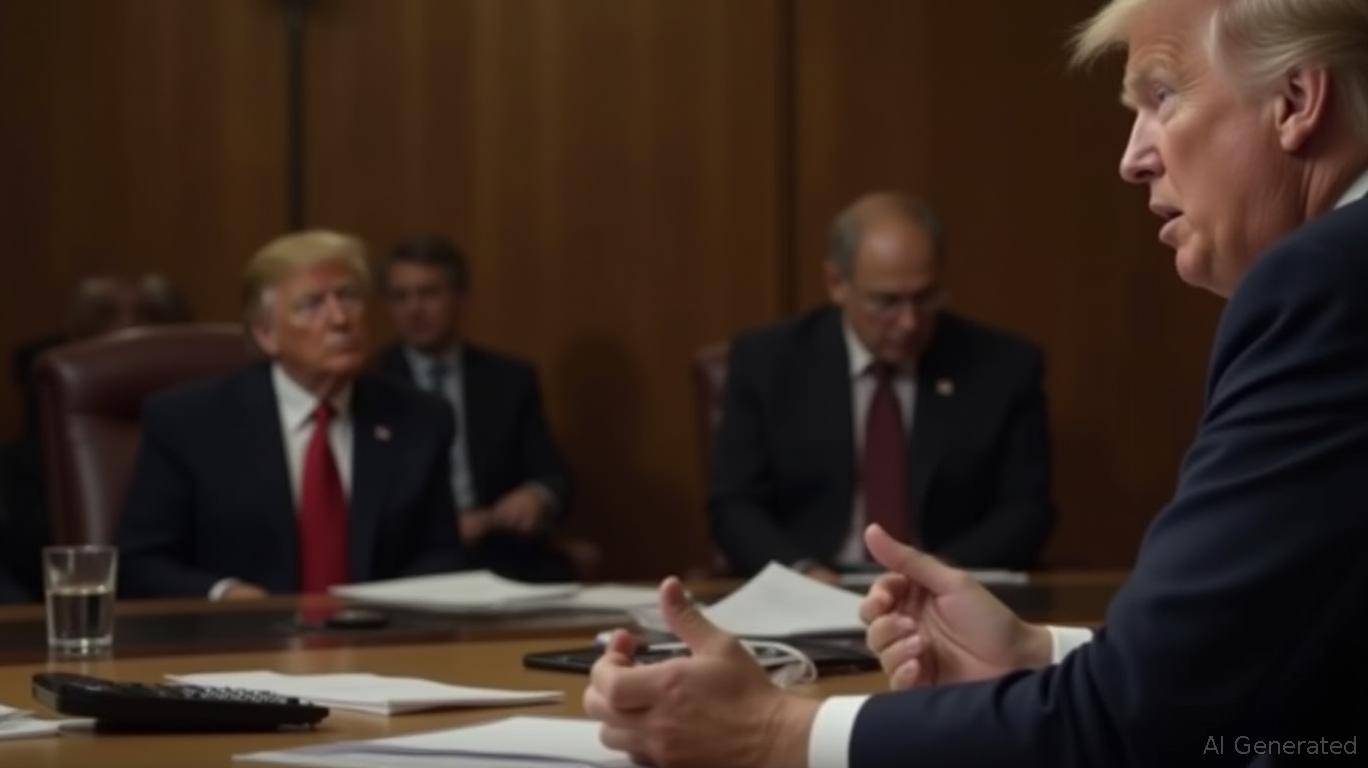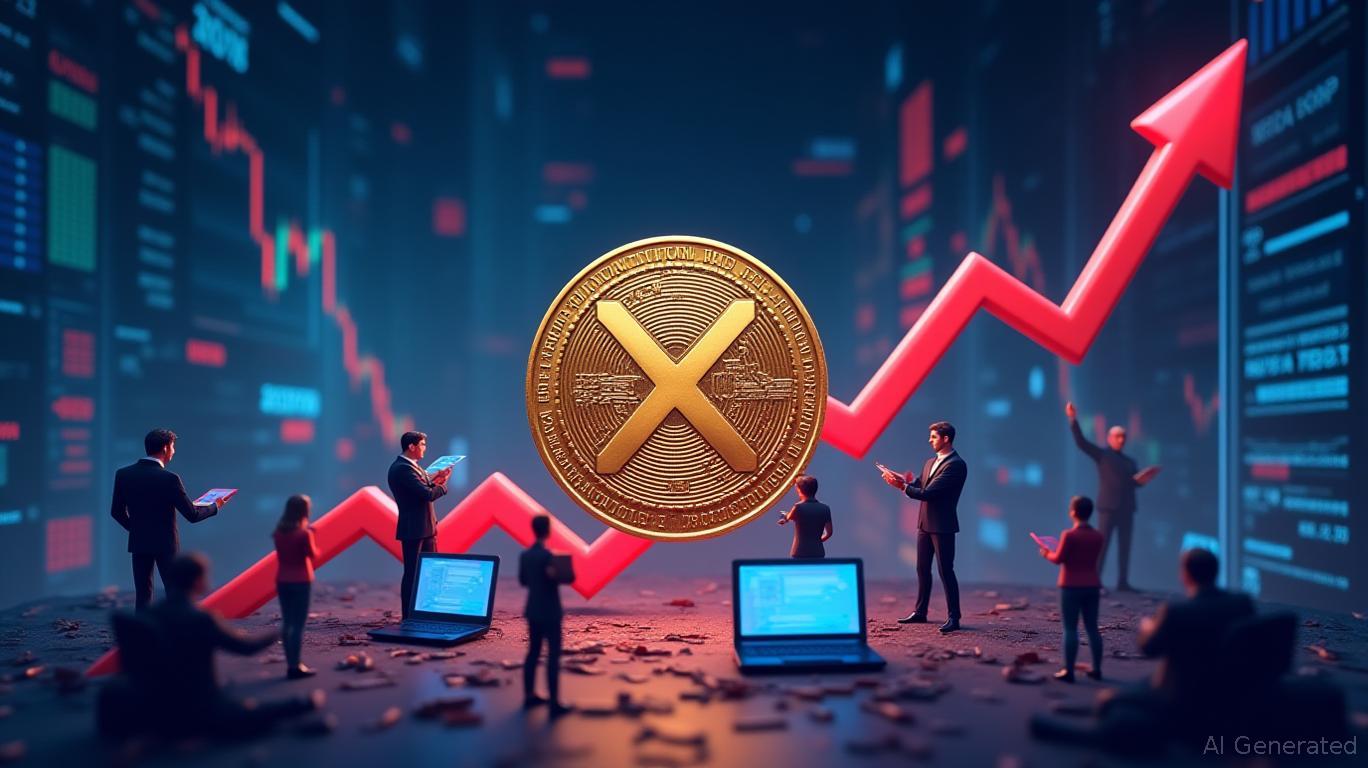Fed Balances Delicately as Trump Urges Rate Reductions While Inflation Concerns Persist
- FOMC to cut rates by 25 bps in October 2025, second cut this year, targeting 3.75%-4% range. - Cooling labor market and subdued inflation drive decision, with manufacturing/retail data to shape future adjustments. - Consumers see limited relief: mortgage rates near 6.34%, credit card rates at 20.03% remain largely unaffected. - Trump pressures Fed for aggressive cuts, but officials warn against inflation risks from tariffs and immigration policies. - Markets expect 1% rate cuts by 2026 end, with mortgage
The Federal Open Market Committee (FOMC) of the Federal Reserve is expected to announce a 25-basis-point reduction in interest rates at its upcoming meeting on October 28–29, 2025, as recent data suggests the job market is slowing and inflation remains muted. This would be the second rate decrease this year, following a similar move in September, and would set the federal funds rate within a 3.75%–4% target range, according to a
This expected rate cut is likely to offer only modest relief to consumers, especially those in the housing market. The average 30-year fixed mortgage rate was 6.34% as of October 2, down from 7.04% in January, but analysts warn that persistently high Treasury yields and inflation expectations are keeping borrowing costs elevated. "Although mortgage rates don’t move in lockstep with the Fed’s policy rate, they do mirror investor outlooks on inflation and economic prospects," explained Ted Rossman, senior industry analyst at Bankrate.com. Economists such as Kara Ng from Zillow Home Loans anticipate that rates could gradually decline through 2026, but are likely to stay "restricted" within the 6%–7% range for now.

For credit card users, the impact will be minimal. The average credit card interest rate is currently 20.03%, a slight dip from 20.12% in September, but a quarter-point reduction will barely lower borrowing expenses. "A 0.25% decrease won’t make a significant difference for most cardholders," Rossman said, noting that variable rates on existing cards usually adjust within one or two billing cycles after a Fed change. Auto loan rates, which recently dropped to 7.12% for new cars in late October, could fall further if the Fed continues to ease policy. However, Jonathan Smoke of Cox Automotive expects little change until automakers introduce year-end promotions.
The Fed’s move also has political implications. President Donald Trump has openly urged the central bank to cut rates more sharply, while Fed leaders must balance the risk that inflation could pick up again due to increased tariffs and immigration policies. "The Fed faces a delicate balancing act," said economist Sung Won Sohn, warning that cutting rates too soon could shake confidence if inflation rebounds or the economy deteriorates further.
Looking forward, futures markets for Fed funds indicate another 1% drop in short-term rates by the end of 2026, with long-term rates expected to ease slightly. For mortgage-backed securities companies such as Armour Residential REIT (ARR), this could mean higher distributable earnings as repo borrowing costs decline, according to a
Disclaimer: The content of this article solely reflects the author's opinion and does not represent the platform in any capacity. This article is not intended to serve as a reference for making investment decisions.
You may also like
Grokipedia's Bet: The Race Between AI Speed and Human Precision in Pursuit of Truth
- Elon Musk's xAI launched Grokipedia, an AI-driven encyclopedia challenging Wikipedia's dominance with real-time data and automated fact-checking. - The project faced delays over "biased training data" concerns and exhibits right-leaning slants, including downplaying the 2021 Capitol riots. - Unlike Wikipedia's human-edited model, Grokipedia uses AI to manage edits but faces criticism for lacking nuanced moderation and citation standards. - Wikipedia's human-centric model and co-founder Jimmy Wales dismis

Solana News Update: Connecting Traditional Finance and Decentralized Finance: Streamex Collaborates with Chainlink to Enable Transparent Gold Tokenization
- Streamex partners with Chainlink to integrate CCIP, enabling cross-chain GLDY transfers on Base and Solana. - The collaboration adds Proof of Reserve and Price Feeds for real-time gold reserve verification and tamper-proof data. - This enhances institutional trust in GLDY's gold-backed stablecoin through auditable transparency and zero-slippage security. - The integration aligns with growing demand for tokenized commodities, leveraging Chainlink's $100B+ TVL-secured infrastructure.

XRP News Today: Institutional Embrace and Rising Derivatives Interest Propel XRP's Key Growth in 2025
- XRP surged 5.4% to $2.57 amid institutional adoption, regulatory progress, and Ripple's strategic moves, including a $100M ETF milestone and CME derivatives demand. - The XRPR ETF, managed by REX-Osprey, reached $100M AUM with 40% from hedge funds and family offices, signaling growing institutional confidence in XRP's mainstream potential. - CME's XRP futures hit $26.9B in notional volume since May, reflecting strong institutional demand, while Ripple integrated Hidden Road into its new prime brokerage s

Ethereum Latest Update: ETHZilla Offloads $40M in ETH to Reduce Gap Between Stock Price and NAV
- ETHZilla sold $40M in ETH to fund stock buybacks, aiming to reduce its 30% NAV discount by repurchasing 600K shares at $12M. - The move follows a $250M buyback plan leveraging treasury strength, with remaining funds to continue narrowing the NAV gap until normalization. - Competitor BitMine expanded its ETH holdings to 3.24M, while ETHZilla's Satschel partnership targets tokenized real-world assets. - Analysts highlight ETHZilla's high Price/Book ratio (50.97) but note its liquidity-focused strategy alig
